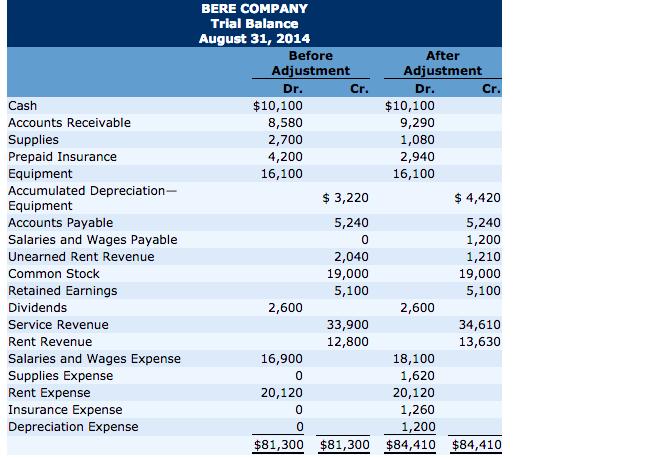After almost a decade of experience in public accounting, he created MyAccountingCourse.com accounts payable definition to help people learn accounting & finance, pass the CPA exam, and start their career. Therefore, everyone within the company network can access the ledger at any point and make a personal copy of the ledger, making it a self-regulated system. This mitigates the risks that Centralized General Ledgers have from having one source control the ledger.
In these circumstances it is common to split off sections of the main ledger into separate subledgers. The next line shows the headings used for each of the ledger accounting transaction entries. For example, when a business owner draws $500 in cash from the business cash box for his personal use, an entry will be made on the debit side of the capital account (i.e., as the owner’s capital in the business is now reduced). The only difference is that the balance is ascertained after each entry and is written in the debit or credit column of the account. In the standard format of a ledger account, the balance is not stated after each transaction.
We will also need to make an entry of $4,000 on the credit side of the furniture account because the liability to this creditor is increasing. Whenever an amount of cash is paid out, an entry is made on the credit side of this account. If the totals of the two sides of the account are equal, the balance will be zero. In case the credit side of the account is heavier than the debit side, the account is said to have a credit balance.
For example, when furniture is bought on credit for $4,000 from Fine Furniture Co., we will need to make an entry of $4,000 on the debit side of the furniture account (i.e., because this asset is increasing). These entries will, of course, be made in two different asset accounts, but the amount will be equal. An important point to note is that the treatment for assets is exactly the opposite of the treatment for liabilities and capital. If he draws any money or goods from the business, this will reduce his capital, meaning that an entry should be made on the debit side of his capital account.
Types of Ledger Accounts
- Consider the following example where a company receives a $1,000 payment from a client for its services.
- The accountant would then increase the asset column by $1,000 and subtract $1,000 from accounts receivable.
- For example, goods purchased with cash will be recorded in the the general journal as a journal entry.
- This is the place where you consolidate all cash inflow and outflow, purchases, sales information, and other journal entries.
- In other words, it is the collection of all accounts of a business enterprise.
You may include individual assets and accounts like accounts payable and receivable, liabilities, inventory, and investments. This information is used to prepare financial reports, monitor finances, track cash flow, and prevent accounting errors or fraud. A general ledger is an accounting record that compiles every financial transaction of a firm to provide accurate entries for financial statements. The double-entry bookkeeping requires the balance sheet to ensure that the sum of its debit side is equal to the credit side total. A general ledger helps to achieve this goal by compiling journal entries and allowing accounting calculations. When expenses spike in a given period, or a company records other transactions that affect its revenues, net income, or other key financial metrics, the financial statement data often doesn’t tell the whole story.
Determine Which Features You Want To Include
These codes are sometimes called an “account number.” In this example, all puppet-making-material purchases are coded 205, all sales revenue is coded 103, and so on. If you’re ever unsure what a certain code means, you can check back to your chart of accounts. No matter which accounting method you use for your business, keep this equation top of mind. It tells you everything you need to know about what healthy books look like.
Posting and Balancing
As a supplement to the general ledger, your chart of accounts lists the account names and purposes of all your sub-ledgers. When you hire a bookkeeper who understands your industry, they’re able to set up your books using sub-ledgers that make sense for you. Now let’s move on to talk about debits vs. credits and how they work in an accounting system.
Make it easier to keep track of your transactions, account debits and credits, tax deadlines, and more by incorporating FreshBooks accounting software into your business’s bookkeeping and accounting processes. FreshBooks has everything you need, including journal entries, accounts payable, balance sheets, and more, freeing you up to work on growing your company and increasing profits. This system acts as a master document detailing the business’s transactions over some time. These transactions are organized by accounts together with their dates, descriptions, and account balances—enough information to give you a bird’s-eye view of your business’s financial health.
For instance, cash activity is usually recorded in the cash receipts journal. The account details can then be posted to the cash subsidiary ledger for management to analyze before it gets posted to the general ledger for reporting purposes. For a large organization, a general ledger can be extremely complicated. In order to simplify the audit of accounting records or the analysis of records by internal stakeholders, subsidiary ledgers can be created. The best way to know if your general ledger is correct is to reconcile all entries then generate a trial balance to verify the completeness and ensure that debit balances equal credit balances.


